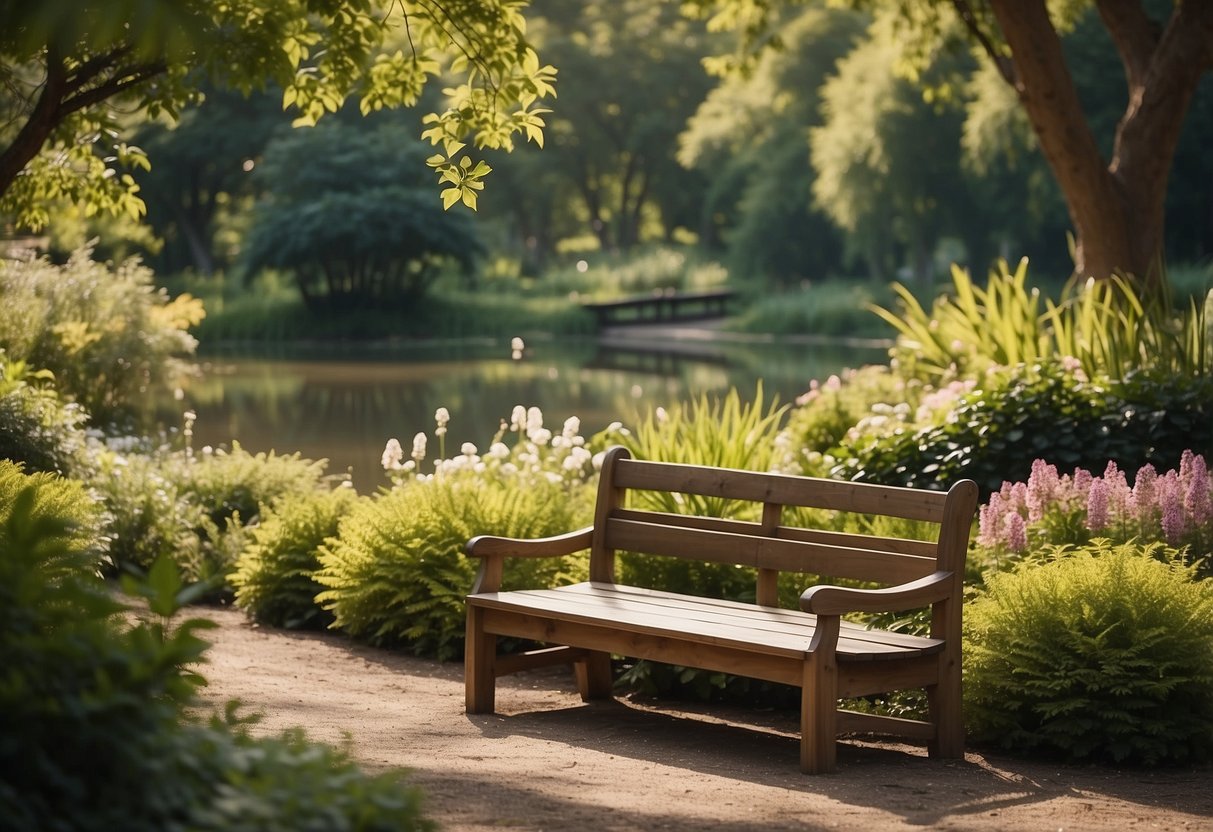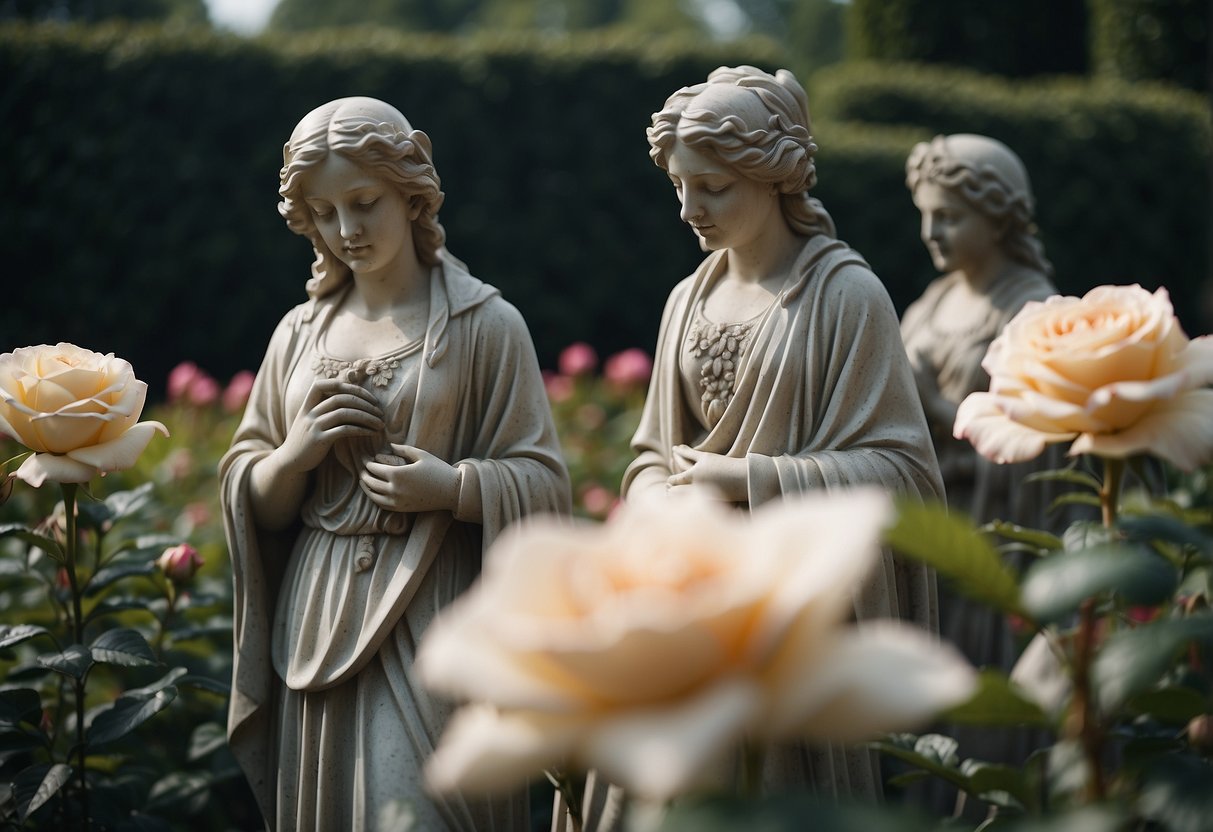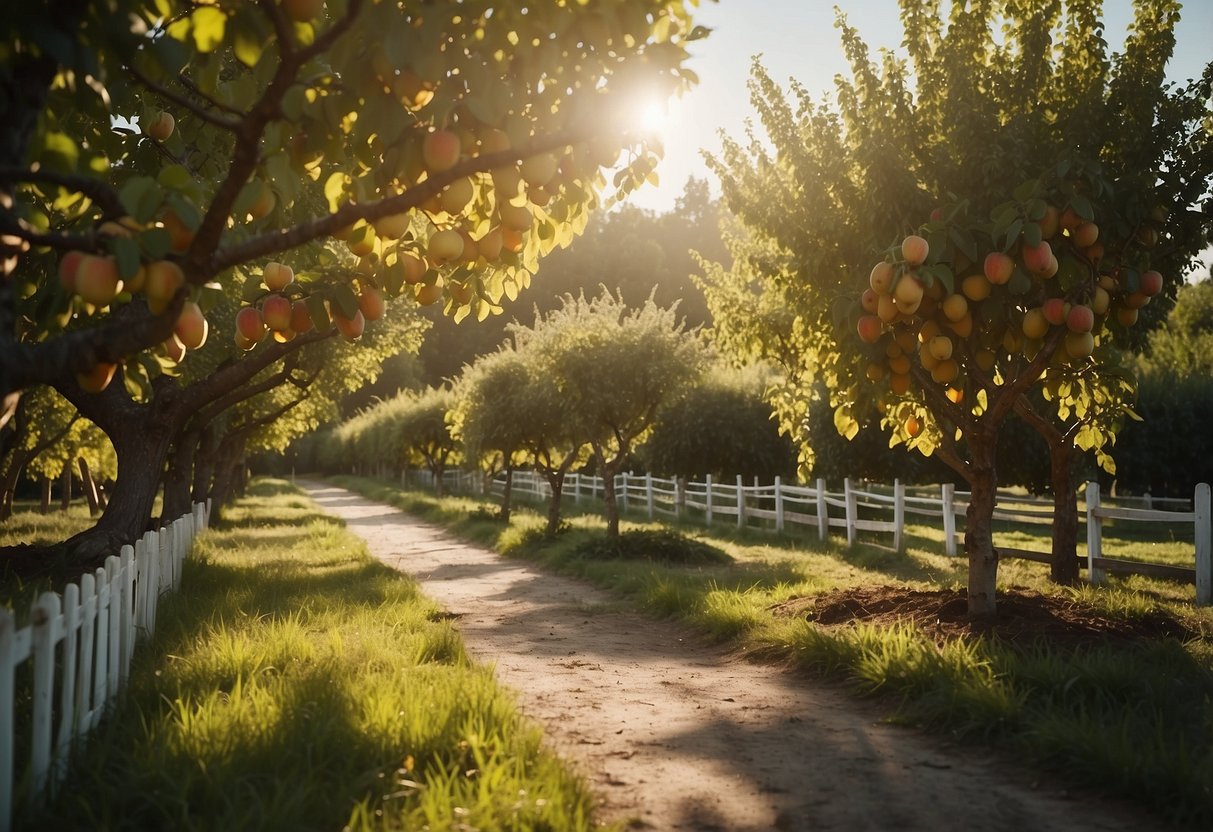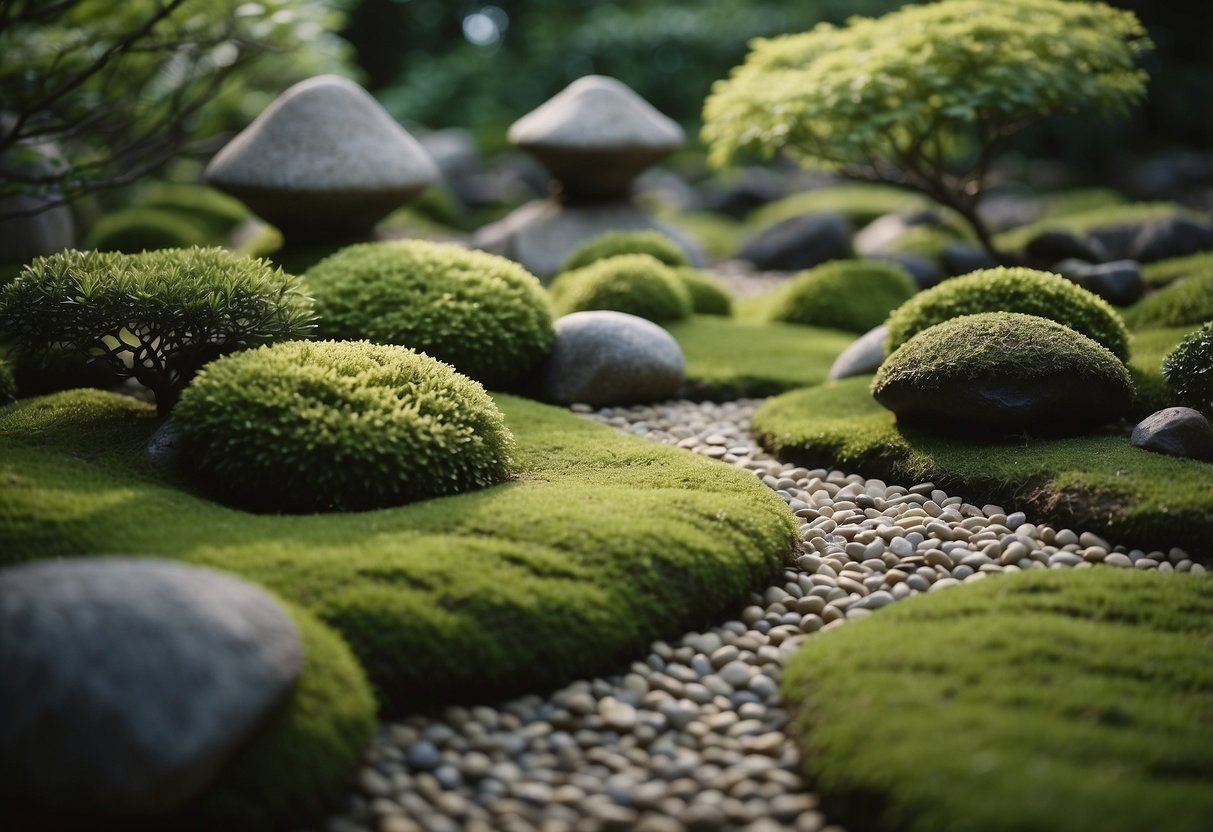Traditional Garden Ideas: Timeless Designs for Your Backyard
Creating a traditional garden can transform your outdoor space into a serene and charming retreat. With classic elements like drifts of bright perennials and beautifully crafted paths, you can enjoy a timeless look that never goes out of style. Many traditional gardens also incorporate practical features like kitchen gardens filled with herbs and vegetables.

You’ll find that traditional gardens often include focal points such as sundials, bird baths, or ornamental ponds. These features add interest and sophistication, giving your garden a sense of elegance and harmony. Embrace the beauty and functionality of traditional garden ideas to create a welcoming and delightful space for relaxation and enjoyment.
1) Rose Garden with Antique Statues

Imagine walking through a garden filled with the fragrance of roses and the sight of antique statues. This type of garden combines the beauty of roses with the timeless elegance of sculptures.
Place statues among rose bushes to create lovely focal points. Marble, stone, or metal statues add a sense of history and charm to your garden.
Choose antique statues with classic themes, like Greek gods or romantic figures. These blend well with traditional garden designs and enhance the overall aesthetic of your rose garden.
2) Herb Garden with Cobblestone Pathways

Imagine walking through your garden on a pathway made of cobblestones. These paths don’t just look nice; they guide you through your herb garden with ease.
Cobblestones add a rustic charm, making your garden feel timeless. They pair well with the vibrant greens of herbs like basil, thyme, and rosemary.
A well-placed sundial at the center of your garden not only tells time but also acts as a beautiful focal point. This design idea takes inspiration from medieval apothecary gardens.
Using cobblestone pathways makes it easy to access and maintain your herbs. You can enjoy the beauty and practicality that these pathways bring to your garden.
3) Shaded Fern Sanctuary

Create a peaceful shaded fern sanctuary in your garden. Ferns thrive in low-light areas, making them perfect for under trees or along shaded walkways.
Combine different fern varieties like maidenhair fern and holly fern for rich textures.
Mix in hostas with bold leaves for added contrast and visual interest.
Consider placing some ferns in hanging baskets or adding fern-themed sculptures for extra flair.
Keep the soil moist but not waterlogged, and mulch with organic material to maintain a healthy environment for your ferns.
4) Tulip and Daffodil Flower Beds

Tulips and daffodils together create a stunning garden. Tulips offer a wide range of colors, while daffodils bring cheerful yellow and white hues.
Plant them in clusters for a natural look. This combination works well along pathways or as borders.
Mix different heights and bloom times to ensure a long-lasting display of color throughout the spring season.
5) Japanese Rock Garden

A Japanese rock garden, often called a Zen garden, focuses on simplicity and calm. You use rocks, sand, and sometimes moss to create a peaceful space.
Rake the sand in patterns that mimic water ripples. This gives a soothing look and helps you relax.
Place larger rocks thoughtfully to represent mountains or islands. This adds depth and interest to your garden. Symmetrical rock gardens look neat and organized, enhancing the serene feel.
Adding a few plants like bonsai trees or moss can introduce color and life to your garden.
6) Victorian Greenhouse

A Victorian greenhouse adds charm and elegance to your garden. These structures often feature high peaked roofs and elaborate glass designs.
Decorated with intricate ironwork, they create a beautiful space for your plants. The glass allows plenty of sunlight, helping your plants thrive.
If you want a picturesque garden addition, a Victorian greenhouse might be perfect for you. Check out 75 Victorian Greenhouse Ideas for inspiration.
7) Koi Pond with Wooden Bridge

A koi pond with a wooden bridge can add charm and elegance to your garden. Imagine walking across a small bridge while colorful fish swim below.
The bridge can be simple or intricate, depending on your style.
Consider using natural materials like wood and stone to match the garden’s aesthetic.
Position the bridge to create a peaceful spot for reflection or to connect different areas of your garden.
Keep the pond clean and well-maintained to ensure the health of the koi and the beauty of the space.
8) Fruit Orchard with Picket Fence

You can create a charming fruit orchard with a picket fence around it. This fence adds a classic look and also keeps animals out.
Try painting the fence white for a traditional touch. You can also plant flowers or vines along the fence for added beauty.
For extra flair, add decorative post caps or finials to the picket fence posts.
9) Meditative Zen Garden

A Zen garden is a perfect spot to relax and clear your mind. You can create pathways using stepping stones that encourage mindful walking and wandering. These paths can guide you through your garden space, providing both beauty and tranquility.
To bring a sense of calm, consider raking patterns into sand. This not only symbolizes water but also creates a meditative experience. You can also introduce a Japanese maple tree with brilliant crimson leaves for added balance and color.
Add small elements like bonsai trees and stone pagodas to enhance the traditional aesthetic. These details help in creating a harmonious and peaceful environment.
10) English Cottage Flower Border

An English cottage flower border is a lovely addition to any garden. It gives a charming and romantic feel. You can mix different flowers like roses, hollyhocks, and catmint. The flowers will bloom in bright colors and create a natural look.
Using catmint adds a touch of lavender-blue. Gravel or woodchip paths can enhance the rustic vibe. Adding herbs like oregano and thyme also makes the garden practical and beautiful.
Fundamentals of Traditional Garden Design

Traditional garden design focuses on symmetry, structure, and a sense of timelessness. You’ll often find geometric shapes and classic plant choices.
Key Principles
Traditional gardens often use geometric shapes to create a balanced look. Paths, borders, and planting beds follow clear, straight lines or formal patterns. Symmetry is another vital aspect, with matching elements on either side of a central axis. This creates a mirror effect that is pleasing to the eye.
Focal points such as statues, fountains, and sundials add interest and sophistication. These elements draw the eye and provide a central theme for the garden. Knot gardens made from boxwood shrubs trimmed into intricate designs are a prime example of this.
Planting schemes in traditional gardens are typically orderly, using repeating patterns and rows. This consistency adds to the formal and elegant appearance. Walkways and seating areas are placed carefully to allow you to enjoy different views of the garden.
Common Plants Used
A traditional garden often includes classic plant favorites like roses, hydrangeas, and peonies. These flowers not only look beautiful but also have a long history in garden design.
Boxwood shrubs are often used for hedges and knot gardens. They are easy to shape and maintain, making them perfect for creating defined borders and intricate designs.
Herbs and vegetables can also fit in a traditional garden. A kitchen garden with herbs like rosemary, thyme, and parsley, as well as vegetables like tomatoes and lettuce, adds a practical touch. This mix of ornamental and edible plants makes the garden both beautiful and useful.
Trees like oaks, maples, and cherry trees provide shade and structure. Their size and shape help balance the smaller plants and create a more layered, dynamic space.
Using these key principles and plant choices, you can create a beautiful and timeless traditional garden. For more insights, check out this guide on traditional garden design.
Creating a Cohesive Garden Layout

A cohesive garden layout brings harmony and beauty to your outdoor space. By carefully planning pathways and incorporating water features, you can create a balanced and inviting garden.
Designing Pathways and Borders
Pathways help guide visitors through your garden and connect different areas. Use materials like stone, brick, or gravel to create interesting textures. Stone pathways offer a natural look, while brick pathways give a classic feel. Choose pathways that match your garden’s style.
Borders define spaces and keep plants in check. Use low hedges, flower beds, or decorative fences to mark boundaries. These borders help separate different areas and add structure. Consider plants like lavender or boxwood for a neat appearance.
Proper lighting along pathways enhances safety and adds a charming glow at night. Solar garden lights are a practical and eco-friendly choice. Pathway lighting should be soft and not too bright to maintain a cozy atmosphere.
Incorporating Water Features
Water features bring a soothing element and attract wildlife to your garden. Options include ponds, fountains, and birdbaths. Small ponds can be home to fish and aquatic plants. Fountains offer a calming sound, while birdbaths invite colorful birds.
Choose a water feature that fits your garden size. A large pond might overwhelm a small garden, while a miniature fountain may get lost in a vast space. Position water features where they can be easily seen and enjoyed.
Maintenance is key to keep water features clean and functioning. Regularly check for algae and debris. Ensure pumps and filters are working properly. For ponds, consider adding plants like water lilies to keep the water balanced and visually appealing.
By implementing these elements, you can create a cohesive garden layout that feels both welcoming and tranquil.
Implementing Traditional Garden Styles

When you want to design a traditional garden, it’s important to consider the unique features and elements that define specific styles. Two popular types are English Cottage gardens and Japanese Zen gardens.
English Cottage Gardens
English Cottage gardens are known for their charming, rustic look. They often feature a mix of flowers, herbs, and vegetables packed tightly together. You might want to plant roses, lavender, and hollyhocks for color and fragrance. Include winding paths and arched trellises to create an enchanting, cozy atmosphere.
Focal points are essential. Classic elements like bird baths, sundials, or even small ponds add interest. You can also use old tools or antique garden furniture for a touch of nostalgia. Remember to mix different heights and textures to keep the space lively and inviting.
Japanese Zen Gardens
Japanese Zen gardens focus on simplicity and meditation. The design often includes rocks, gravel, and water elements. To create one, start with a base of gravel or sand, which is carefully raked to symbolize water ripples. Large stones or boulders represent islands and mountains.
Adding a water feature like a small pond or bamboo fountain can enhance the serene feel. Plant selection is minimal but meaningful. Use moss, ferns, and small shrubs to keep the garden low-maintenance and peaceful. Lanterns and simple wooden bridges can also add to the tranquil ambiance.
Use these tips to create a garden style that reflects your personal taste and brings peace to your outdoor space.







